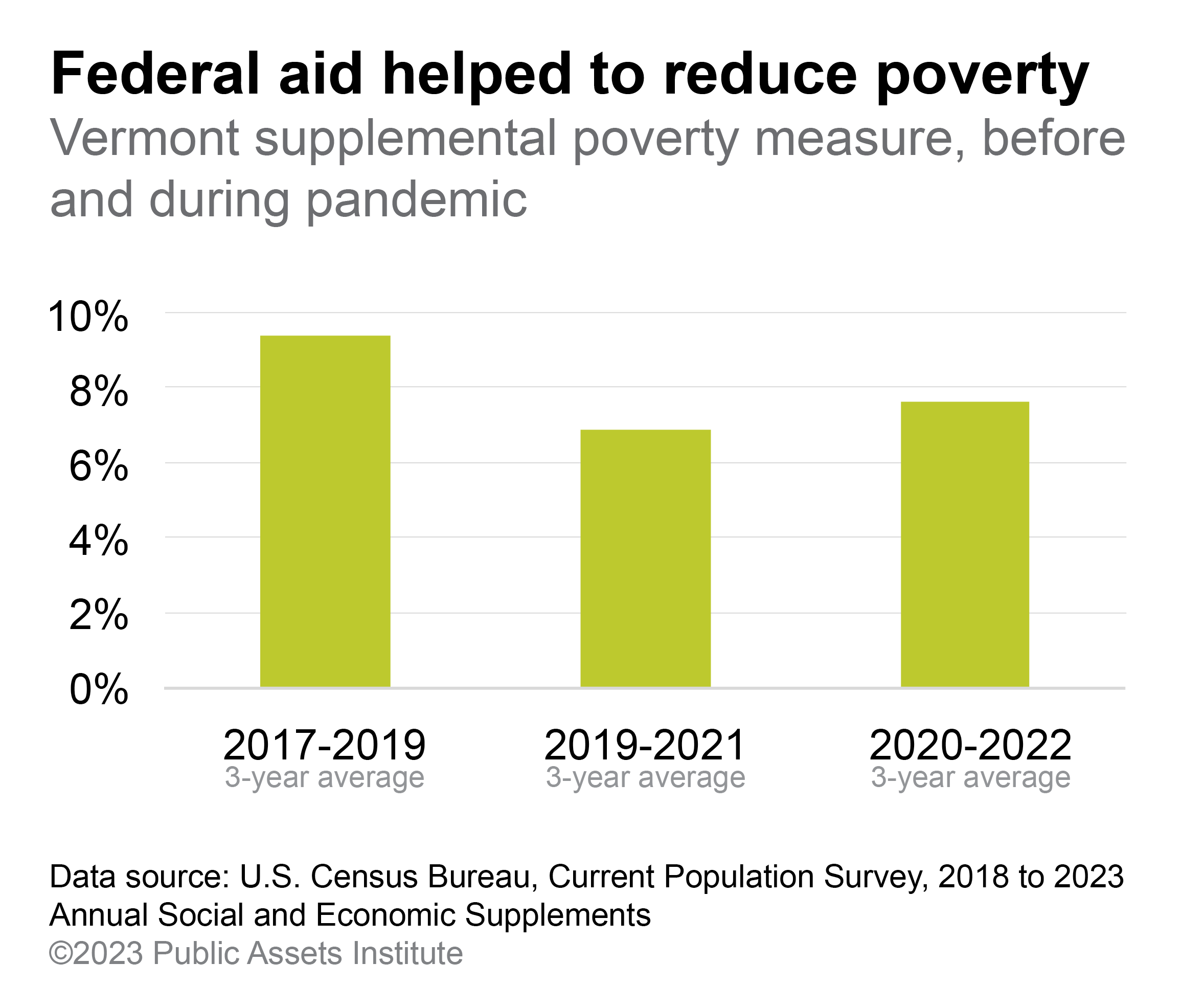We can reduce poverty, but will we?
We have the means to reduce poverty. What we need is the political will. That is the conclusion of a massive real-world experiment that took place during the Covid pandemic of 2020-2022. Now that the emergency has subsided, we are beginning to see the effects of actions—and the dangers of inaction—taken by political leaders to help people meet their ongoing basic needs.
In response to the economic problems triggered by the Covid pandemic, the federal government moved quickly to put money in people’s pockets. Some of the efforts were temporary, such as the Economic Impact Payments and the Paycheck Protection Program (PPP) that helped employers retain their workers while businesses were shut down. Once things opened up again, those programs lapsed.
Congress also expanded some existing programs during the pandemic. Benefits increased under the Supplemental Nutrition Assistance Program (SNAP), known in Vermont as 3SquaresVT. Supplemental federal unemployment insurance increased benefits and extended eligibility to more workers. And there was a substantial increase in the federal Child Tax Credit (CTC): From $2,000 a year for a child of any age, the credit rose to $3,600 for children under six and $3,000 for children six and older.
The expanded CTC had a dramatic effect: It is credited with reducing the national child poverty rate to 5.2 percent, the lowest level in more than 50 years. In combination with the other federal programs, it also helped to reduce poverty overall.
 In Vermont, according to new data from the U.S. Census, an average of 48,000 people, or 7.6 percent, were living below the federal poverty line from 2020 to 2022.1 That was an increase from the 2019-2021 average but still below the pre-pandemic poverty rate. In other words, thanks to government assistance, 10,000 fewer Vermonters were living in poverty during one of the biggest economic crises of the century than during the period of 2017 through 2019.
In Vermont, according to new data from the U.S. Census, an average of 48,000 people, or 7.6 percent, were living below the federal poverty line from 2020 to 2022.1 That was an increase from the 2019-2021 average but still below the pre-pandemic poverty rate. In other words, thanks to government assistance, 10,000 fewer Vermonters were living in poverty during one of the biggest economic crises of the century than during the period of 2017 through 2019.
So there was Part 1 of the experiment: Federal and state policymakers understood the urgency of expanding unemployment benefits, instituting programs to retain employees, increasing child tax credits, and otherwise helping people meet their basic needs. The nation and the state found the means to do it, and political leaders found the will. Mostly, their efforts succeeded.
Then came Part 2. As jobs returned and people went back to work, the need for emergency economic assistance decreased. In 2022 Congress allowed the pandemic-era Child Tax Credit to lapse. And—no surprise—nationally, the number of children in poverty rose again.
Vermont made a different choice. Here lawmakers stepped up for children. In 2022, they approved a state Child Tax Credit of $1,000 a year for children under six. And this year, the Legislature made a big initial investment to increase subsidies for childcare. We don’t yet know the effects of these expenditures. Although the Legislature approved the state CTC last year, the first claims could not be filed until this year.
But one piece of evidence is incontrovertible: Bigger federal credits—short-lived as they were—lowered child poverty. They are likely to do so in Vermont too.
It’s too bad Congress couldn’t muster the political will that Vermont’s lawmakers did. But poverty was a problem before anyone heard of Covid—and it remains a problem now that the pandemic has waned.
Elected officials must keep choosing to promote policies that ensure everyone can meet their basic needs.
- The statistics are based on the “supplemental poverty measure” (SPM), which is a more realistic gauge than the official poverty measure that has been in place since the 1960s. The supplemental poverty measure takes into account government assistance, for example 3SquaresVT, Social Security, and other benefits. But it also takes a more comprehensive view of the cost of basic necessities: food, clothing, shelter, and utilities. By contrast, the official poverty measure essentially compares a family’s cash income to the cost of food to determine whether the family is living above or below the poverty threshold. [↩]

